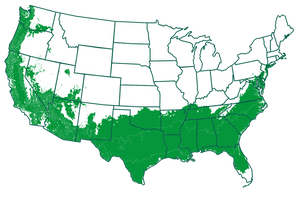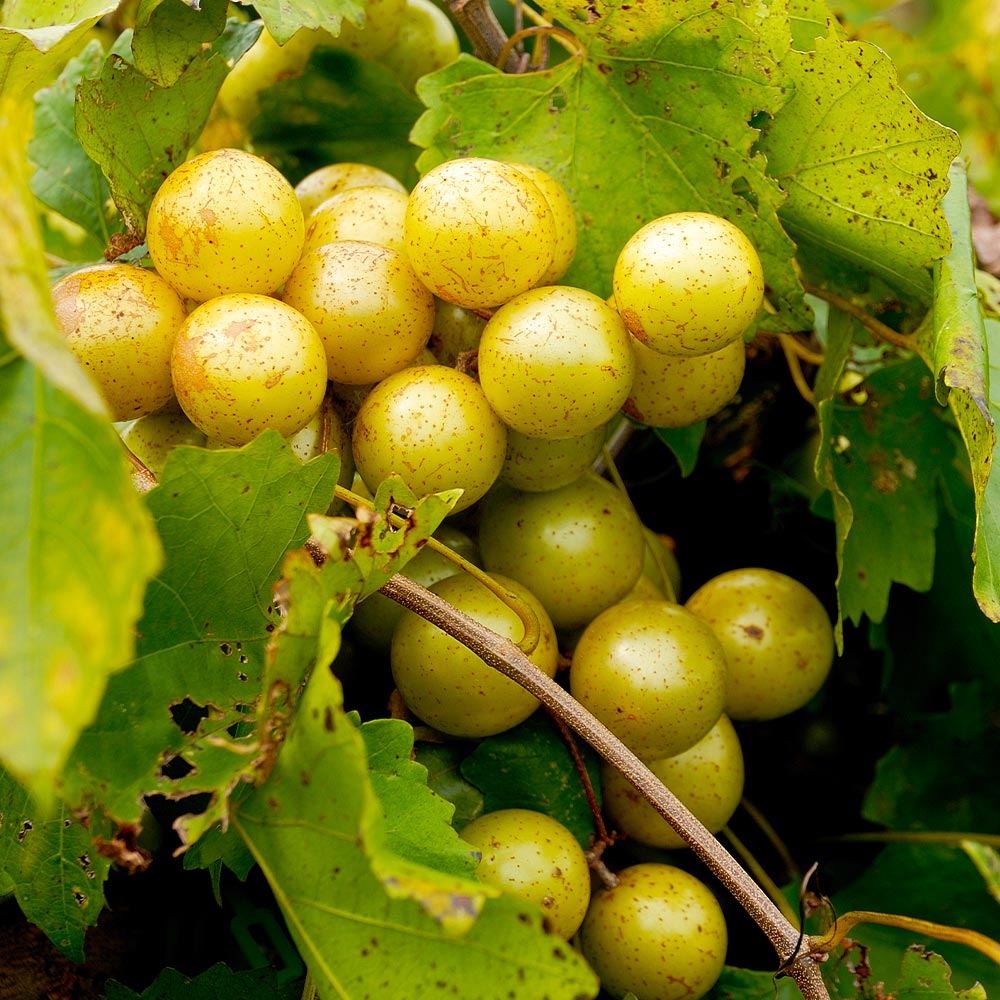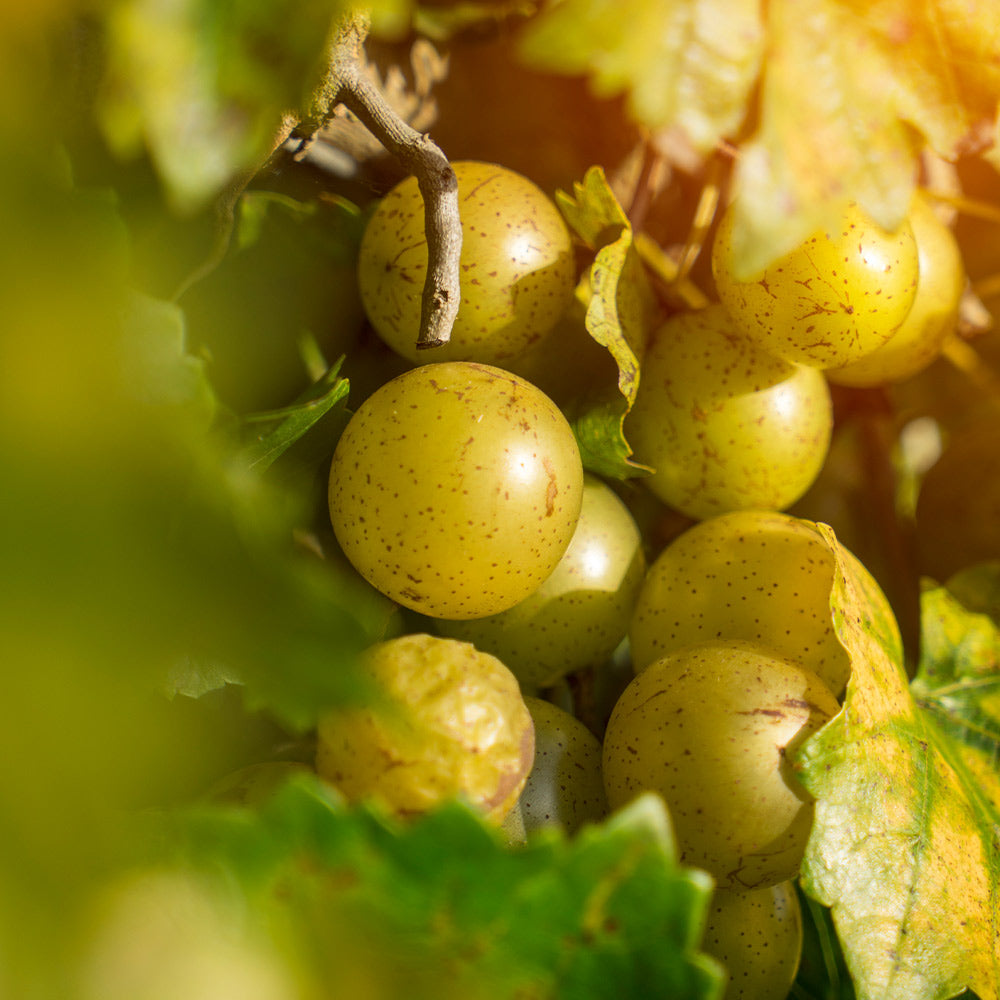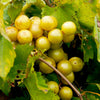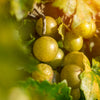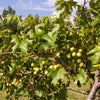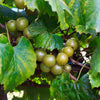* Images shown are of mature plants

Have questions? Talk with our Plant Experts (800) 973-8959
Save 25% on $200+ with code FALL25.
Questions? Call our plant experts: (800) 973-8959
Most Popular Wine Producing Grape!
- Top wine producing grape from North Carolina
- Bronze-colored grapes with deep green leaves
- Vigorous, self-fertile vine
- Resistant to pests and diseases
- Excellent cold tolerance
Gorgeous Grapes on an Attractive Vine
Aside from its unrivaled wine and juice making qualities, the Carlos Muscadine grape is a thing of beauty to admire on the vine. Perfectly round and metallic bronze in color, the clusters of grapes are surrounded by glossy, deep green leaves with incredible visual appeal.
Carlos is King in Carolina
When it comes to wine production, there's no better Muscadine grape variety than the Carlos. Heavy in numbers and high in quality, more than 90 percent of all the muscadine grapes produced in North Carolina are Carlos Muscadine.
Well Suited for Delicious Wine or Juice Production
Ripening to a deep bronze at the season's midpoint, the Carlos grapes signal their readiness for an optimal harvest. Once off the vine, put their magic to work by making delicious juices or the flavorful wine for which they are prized.
Pollination Info
Carlos Muscadine Grape Pollination
Carlos Muscadine Grapes are self-fertile. You will get fruit with only one plant. However, adding an additional Carlos Muscadine Grape will drastically increase the size of your crop.
Planting & Care
The Carlos Muscadine Grape (Vitis Rotundifolia Carlos) is a beauty to admire on the vine. They’re delectable treat when freshly picked or when made into wine, jams or preserves. This particular grape variety is low maintenance and fast growing. The Carlos Muscadine will perform best in USDA growing zones 7-9, maturing to a height of 40-60 feet tall and 20 feet wide.
Location: When planting Carlos Muscadine grapes, find a location that offers full sun and moist, well-draining soil. Avoid shaded areas as fruit set/production will be reduced in the absence of sun during the growing season. Muscadines are a vine and will require some type of trellis to grow on properly.
Planting Instructions:
1) Dig your hole 3 times the width and slightly shallower than the root ball.
2) Loosen the soil, in and around the hole so the roots can easily break through.
3) Use your fingers to separate the roots of your Carlos Muscadine vine and gently position downward in the hole. The top of the root flare (where the roots end and the trunk begins) should be about an inch above the surrounding soil.
4) Begin to backfill the site, tamping down the soil as you go.
5) Apply water to settle the soil and remove any air pockets that may have formed then mulch to retain soil moisture.
Watering: Water regularly for the first year by giving your plants about 1 inch of water (1-2 gallons) a week. Directly moisten the roots but avoid spraying or misting the grapes. After the vines are a bit more established, they will seldom need watering. Be watchful for leaf drop, this is an early warning sign that you may be over watering.
Pollination: Most species of grape are self-fertile but a good rule of green thumb is to always plant in pairs. This will assure you a healthy yield of fruit come harvest time.
Fertilizing: Apply a 1/4 pound of formula 12-12-12 or 10-10-10 fertilizer in an 18 inch circle around each vine in April. Re-apply every 6 weeks until July during the first year of growth. In the second year, apply fertilizer in March, May and July increasing the dose to 1/2 pound per vine. Be sure the fertilizer is not closer than 21 inches from the trunk.
Pruning: Balanced pruning maintains the vine’s form, size, vigor, and next season’s fruiting wood. Pruning should be done when the vines are dormant in late winter or early spring. Do not prune when vines could freeze, because the new growth can be brittle and can damage easily. Foliage around the grape clusters can be removed to expose the fruit to sunlight in a short growing season. During your first growing season multiple shoots will begin to grow and the vine may become bushy. Some trim their plants back to just one or two shoots. Others prefer to let them grow so they may have a better selection to choose from during the following winter’s pruning.
Harvesting: Taste is the best determining factor if it’s time to harvest or not. When fruit appears. Test its ripeness by picking a few grapes from different areas and tasting them. If the grapes are sweet, start picking as they ready for harvesting.
Tips:
*Grapes will not continue to ripen after picking so be sure not to to pick them too prematurely.
*Color and size are not necessarily good indicators of ripe fruit. Only pick the fruit after you’ve tasted it and are certain it is ready.
Shipping Details
Estimated Shipping Time: Most orders ship immediately. As noted on the website, some items are seasonal, and may only ship in spring or fall. Once your order is shipped, you'll receive an email with a tracking number.
| Amount of Order | Shipping Charge |
|---|---|
| Less than $49 | $19.95 |
| $49 + | FREE SHIPPING! |
Product Details
| Mature Height: | 40-60 ft. |
| Sunlight: | Full Sun |
| Growth Rate: | Fast Growing |
| Harvest Time: | September - October |
| Botanical Name: | Vitis rotundifolia 'Carlos' |
| Does Not Ship To: | AK, AZ, CA, HI, ID, NY, OR, WA |
| Grows Well In Zones: | 7-9 outdoors |
| Your Growing Zone: | # |
